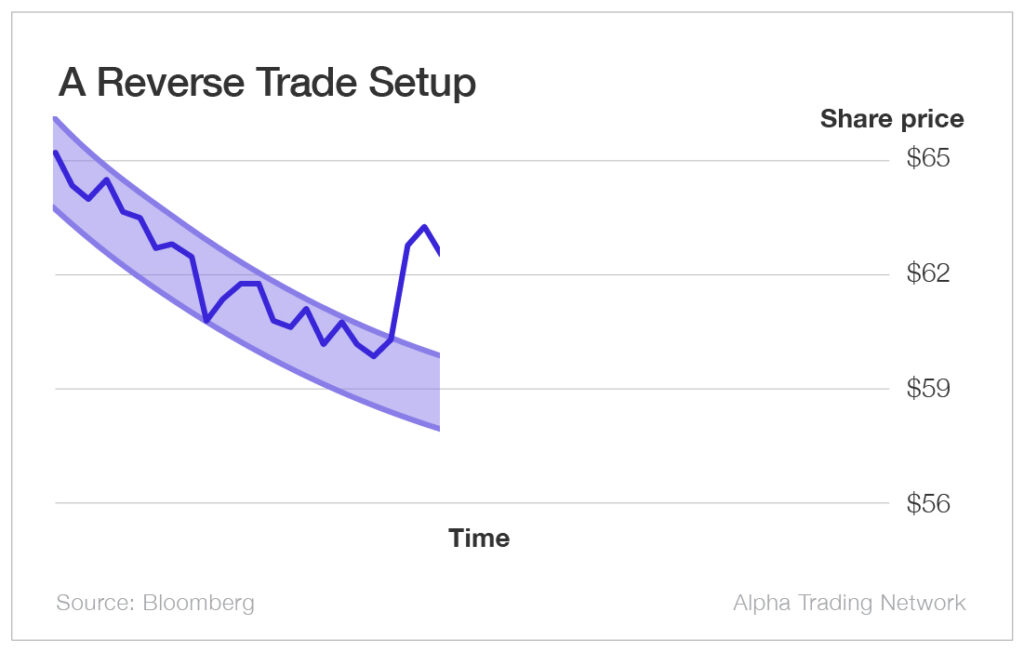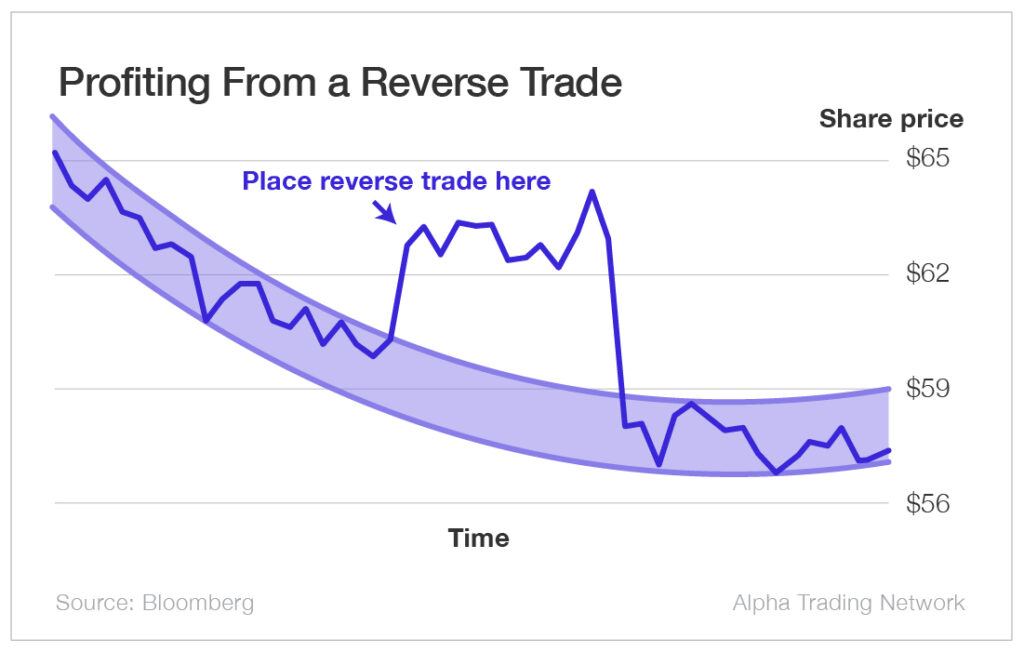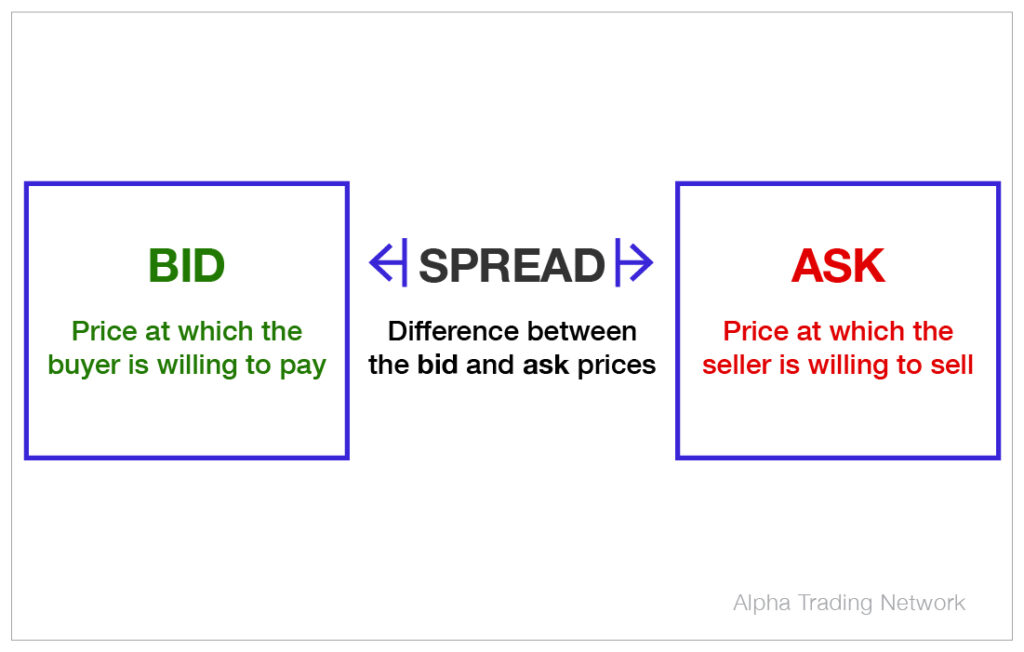
The Alpha Trader Quick-Start Guide

Welcome to Alpha Trading Network!
I want to be sure every subscriber to this service has a working knowledge of how it operates…
And how you can consistently make profits with it… even when stocks are falling!
This quick-start guide will act as a companion piece to my video series, The Alpha Trader Master’s Program. You should review both before jumping into the trades.
For detailed instructions on how to access and use the chat room, click here.
Speaking of trades…
I’ll be providing recommendations each morning from a new system I’ve built that’s designed to take advantage of short-term volatility.
That volatility can be moving a stock up or down. It doesn’t matter. You’ll be able to profit from either direction.
The goal is to establish bull or bear (reverse) trades on shares of companies that the system identifies, then exit those trades for profits within anywhere from a few minutes to a few days to a few weeks. We’ll ride the momentum as long as it stays in our favor.
The ABCs of Alpha Trading
After decades of trading the markets, I’ve developed a remarkably simple and predictable system for making profits over very short periods of time.
My system focuses on identifying the normal trading range for a stock…
I think we all understand how we can make money when a stock is trending higher. Let me explain how we can make money when a stock is falling.
Here’s a real-life scenario regarding a stock move that happened recently (shown in the chart below). This stock was trending lower in a relatively tight range. But suddenly, it “bounced” out of the range

In most cases, a bounce like this one is an unnatural move… that won’t last. (Thanks to some very expensive computers and sophisticated financial analysis software, I can quickly determine if there is any substance or sound reasoning behind such a move.)
Often, it’s simply a “dead cat bounce,” a brief recovery in the price of a declining stock.
This unsustainable move above the current trading range creates the perfect time to get in and make a reverse trade.
If the stock moves back into the trading range and stays there… it’s time to sell. If the stock breaks through the bottom of the range and heads lower, even better. That means even more profits!
In the case of our example, the bounce and the return to between the trend lines happened within a few days.

That brings me to a critical feature of this service… the investment tool that underpins the entirety of Alpha Trading Network: options!
It’s important that you understand how they work. Using options is crucial to your success.
Making Big Gains in Short Time Periods
Options are one of the most powerful ways to leverage stock plays and maximize your gains…
In the example I gave above, you wouldn’t have made much money shorting the stock (and you would have assumed a lot of risk)… But buying a well-targeted put option would have made you triple-digit profits (while you assumed very little risk).
Unfortunately, many new investors are intimidated by options. However, you shouldn’t be. Options are just as easy to trade as stocks, bonds, cryptocurrencies or any other assets…
So what is an option?
In short, it’s a contract. An option gives its holder the right – but not the obligation – to buy or sell 100 shares of a stock by a designated date.
Each option is linked to a specific stock. So whenever you place an options trade, its price will be affected by the movement of its underlying stock. (An option can be linked to other types of financial instruments, but for our purposes, we’ll focus on options that are linked to stocks.)
Options come in two standard varieties: call options and put options. And again, options trade in lots of 100 shares, called contracts.
A call option gives you the right – but not the obligation – to buy 100 shares of a particular underlying stock at a specific price (the exercise price, or strike price) before a specific date (the expiration date).
The opposite of a call is a put. A put option, or what I refer to as a reverse trade, conveys the right – but again, not the obligation – to sell 100 shares of a stock at the strike price by the time the put option expires.
All options have expiration dates. We’ll be placing trades on options that expire in a matter of days or weeks or in a few months.
Here’s the key factor with options: If you don’t exercise your right to buy or sell the underlying shares before the option’s expiration date, the option will expire and be worthless.
Easy Peasy
The important thing for you to understand is that options are traded just like stocks in the sense that they have symbols and their prices fluctuate along with their underlying assets or securities…
The key question you need to ask yourself is whether you think a specific company’s stock is going to go up or down.
If you think it’s going to rise, you buy calls. If you think it’s headed for a decline, you buy puts. You then need to decide on a strike price (your target price).
Next, you need to pick a time frame for your scenario to play out – you need to decide on the expiration date. This time frame can be anything from weeks to months to years out from the day you buy the option.
(I’ll be providing all this information in the alerts I send you… but I want you to be familiar with the process.)
Options’ prices vary depending on their expiration dates and strike prices, as well as the volatility of the markets, industries and companies in question.
When you buy an option, it is as though someone is saying, “I will allow you to buy or sell 100 shares of this company’s stock at a specified price per share at any time between now and the expiration date of the option.”
And it’s further understood that for this right, you’ll be expected to pay a fee.
That fee is called the premium, which will vary considerably depending on the strike price and the time until expiration as well as the stock’s volatility…
Now that I’ve mentioned the premium… let me jump into how options are valued.
How Are Options Valued?
An option has two sources of value. The cost (or premium) of any given option is based on its intrinsic value and its time value.
Intrinsic value refers to the portion of the option premium that is “in the money.” Any additional value beyond that is considered time value. For example…
Imagine that a call option has a current premium of $3 ($300 per contract) and a strike price of $45. If the underlying stock’s market value is $46 per share at the time you buy the call, we would say the following about its intrinsic value as well as its time value:
- This option has $1 of intrinsic value. In other words, it’s $1 in the money, or $1 above the strike price.
- That leaves $2 (the $3 premium minus the intrinsic value of $1) for the time value.
Even if the stock’s value stays the same – leaving the intrinsic value at $1 – as the stock approaches expiration, its time value will shrink, leading to a decrease in the total amount of the premium.
At expiration, the time value will equal zero, leaving the premium value equal to the intrinsic value (in this case, $1).
All call options act in the same way when it comes to intrinsic value. All call options that are in the money (i.e., the strike price of the option is less than the stock’s current value) will reflect that value.
If an option is in the money by $5 (e.g., the option’s strike price is $35, and the current stock price is $40), then the option’s premium will be at least $5. If the option moves $10 into the money, then the option’s premium will reflect at least $10 of value.
Conversely, if the stock declines and the option moves “out of the money” (for example, if the strike price is at $45 and the stock price is at $44), then the intrinsic value will go to zero and the premium will reflect only the time value.
Although options give you the right to buy (or sell, in the case of reverse trades) the underlying shares… we won’t be doing that in my Alpha Trading Network service.
We will be buying and selling only the options. We won’t get involved in buying or selling the underlying shares.
That’s part of the beauty of this service…
You won’t have to make big outlays of cash… you won’t be required to make large investments… and you’ll never take on huge risks.
With the leverage that options provide, you can make major profits with small bets!
We’ll simply buy an option, watch the price rise and then sell the option before it expires.
With that in mind, let’s talk about how the market buys and sells options.
How to Trade Options
Each options contract has a bid price and an ask price. They’re also known as the bid and the offer.
Options trading involves a two-way price quotation that illustrates the best price the option can be bought or sold for at any given time.

The bid price represents the maximum price that a buyer is willing to pay for an options contract. The ask price, or offer price, represents the minimum amount a seller is willing to take for the same options contract.
But the final trade price is negotiable…
A trade can occur only after the buyer and seller agree on a price for the option – the bid price, the ask price or somewhere in between.
The difference between the bid price and the ask price is called the spread. The smaller the spread, the more liquid the option and the easier it is to trade it.
(This is another decision you won’t have to sweat over. My alerts will give you specific instructions on what price to buy or sell for. But it’s important to be aware of the terms and the process taking place.)
Making Money Quickly… Regardless of Market Direction
By making trades using options, you’ll give yourself several advantages.
The first and most obvious advantage is that options provide leverage when trading stocks. You can invest a little… and make a lot!
Options often move in multiples of the underlying stock. A 20% move in the stock could mean a 40%, 80% or even several-hundred percent move in the option.
The option’s price will reflect the intrinsic value, but beyond that, there’s no direct correlation to how high its price can go. The size of the move depends on investor expectations and the demand they create.
The second advantage is nimbleness. You can be in and out of trades quickly. In a volatile market like this one, that’s a big deal. The faster you can make your profits and take your money off the table… the better.
And the third advantage is that with my reverse trades, you can make big gains on stocks that go down.
That’s why I’m so excited about this service…
You can rake in huge, fast profits every single day the market is open. You won’t need to be concerned with what’s going on in the economy, how high inflation is or the size of the federal deficit.
We’ll just keep trading predictable patterns… over very short time periods… and collecting oversize profits.
I look forward to helping you collect those profits.
Thank you for joining Alpha Trading Network.